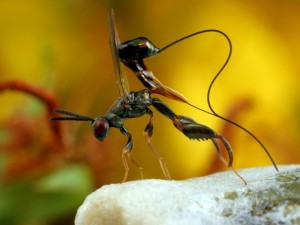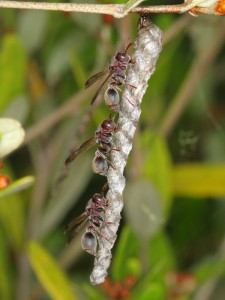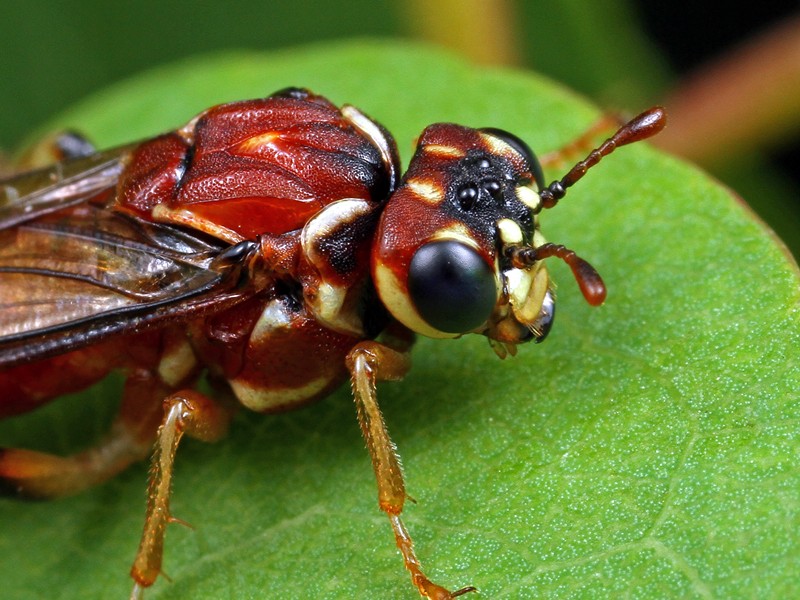Order Hymenoptera

Praying Mantis ootheca (egg case).
Bees, Wasps and Sawflies belong to the same order as ants. I’ve given them a separate page for ease of reference.
The name Hymenoptera means “membrane wings”, and all bees, wasps and sawflies have two pairs of such wings. Each pair is held together with tiny hooks so they move together as one in flight. Some female wasps, such as flower wasps, don’t have wings. They all have relatively large compound eyes, a pair of antennae and mandibulate (chewing) mouthparts. Females have egg-laying structures called ovipositors at the end of their abdomens, however some have been modified to become stings, as can be found on worker honey bees.
Hymenopterans undergo complete metamorphosis. The larvae hatch from eggs and develop through a series of moults before pupating and re-emerging as adults. Some larvae look like legless grubs, while others have three pairs of legs and are reasonably mobile. Some fend for themselves during their larval stage; others are tended by adult worker castes.

Ropalidia revolutionalis
The social species, such as some bees and wasps, rear their young in specially constructed hives, which can be large structures in places offering suitable shelter, or just a small series of connected cells hanging from branches or eaves. They vigorously defend their nests and will attack and sting any intruders. Some of these stings are pretty painful, I can tell you. Fortunately, I don’t suffer any allergies, so after a few days of itching I’m pretty right. To some unlucky people, a sting can be a whole lot more uncomfortable, even life-threatening.
The diet of these insects varies from species to species. They can be nectar feeders, predators or parasites. Quite a few species of wasps seek out other invertebrates and lay their eggs on or in them, sometimes after temporarily or permanently paralysing their victim with their sting. The larvae then feed on their host while it is still alive. Not a pleasant way to go.

Thyreus waroonensis
Bees, wasps and sawflies can be found in any area where there is an adequate food supply, particularly in regions with plenty of flowering plants. As with most other insects, there tends to be a greater abundance of species during the warmer months of the year.
As I said earlier, getting stung is not a pleasant experience, so try to keep a respectful distance when observing or photographing these insects; some of them have very short fuses.
A special note of thanks to Ken Walker from the Victorian Museum for his help with some of the bee identities.
~~~~~
Click here to see the Bee, Wasp and Sawfly photo galleries
~~~~~
